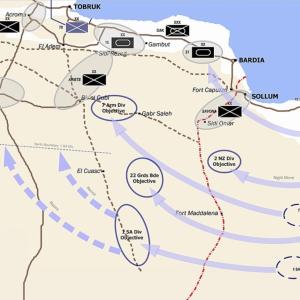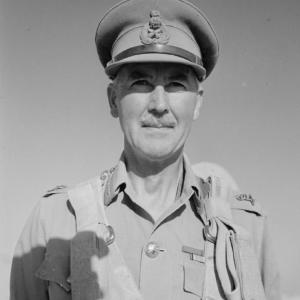
Operation Squatter
Operation Squatter was the first mission attempted by the newly formed Special Air Service (SAS) during the North African campaign of the Second World War. Conceived in 1941 as a small commando-style raiding force designed to strike deep behind Axis lines, the SAS was still experimental, untested, and operating with limited resources when this operation was launched. The mission ultimately failed, but it became the foundation on which the regiment built its doctrine, reputation, and future success.
The operation was led by Lieutenant David Stirling, the founder of the SAS, whose vision was to use small teams of highly trained men inserted far into enemy territory to destroy aircraft, fuel depots, and supply lines. Stirling’s plan for Operation Squatter was ambitious. The target was a series of Axis airfields around Gazala, Tmimi, and other sites in Cyrenaica. Destroying the aircraft on these airfields was intended to support the British Eighth Army during Operation Crusader by reducing Axis air power before the main Allied offensive.
The plan relied heavily on surprise, stealth, and the use of parachute insertion. The men, drawn from Layforce and volunteers from other units, underwent rapid and sometimes improvised training. They were not yet equipped with the later jeeps that became synonymous with SAS raids; instead, they had to parachute in with explosives and fight their way across the desert on foot until they reached pre-arranged pickup points.
Almost everything that could go wrong did go wrong. On the night of 16/17 November 1941, the weather over North Africa was unusually violent. A severe storm struck as the SAS planes approached the drop zones. Gale-force winds, intense turbulence, and thick cloud made jumping hazardous. Many of the troopers were blown far off target, scattered across the desert in small isolated groups. Others were injured upon landing. Equipment was lost or damaged, including demolition charges essential for the airfield attacks.
The poor visibility and scattered landings meant that coordinated assaults on the airfields became impossible. The men were disoriented, exposed, and operating without the element of surprise. Those who managed to locate the targets found them too heavily defended for a small, fragmented force to attack effectively. With no realistic chance of success and many men missing or wounded, the operation was abandoned. Survivors began the dangerous trek across the desert to link up with the Long Range Desert Group (LRDG), which had been assigned to extract them. Of the roughly 55 men who took part, only about two-thirds made it back. The rest were killed, died of exposure, or were captured.
The causes of failure were numerous, but the primary factor was the weather, which rendered parachute insertion entirely unsuitable for desert operations. Inadequate training and experience also contributed; this was the unit’s first mission, and both planning and execution reflected the inexperience of a newly created force. Communications were limited, navigation in storm conditions proved extremely difficult, and the equipment available was not yet optimized for the type of deep-raid warfare Stirling envisioned.
Despite the disaster, Operation Squatter produced lessons that transformed the SAS. The most important was the realization that parachute drops into the North African desert were too unpredictable and dangerous. Stirling quickly abandoned the parachute method in favour of mobile hit-and-run attacks using jeeps, guided and supported by the LRDG. This shift proved decisive and became the hallmark of later SAS successes against Axis airfields.
The mission also highlighted the need for intensive small-team training, better intelligence before raids, and improved coordination with other desert units. The value of surprise remained central, but it had to be combined with mobility, reliability of navigation, and an ability to extract quickly after an attack. While Operation Squatter achieved none of its immediate objectives, it gave the SAS the harsh but necessary experience that shaped its tactics and identity for the rest of the war.










